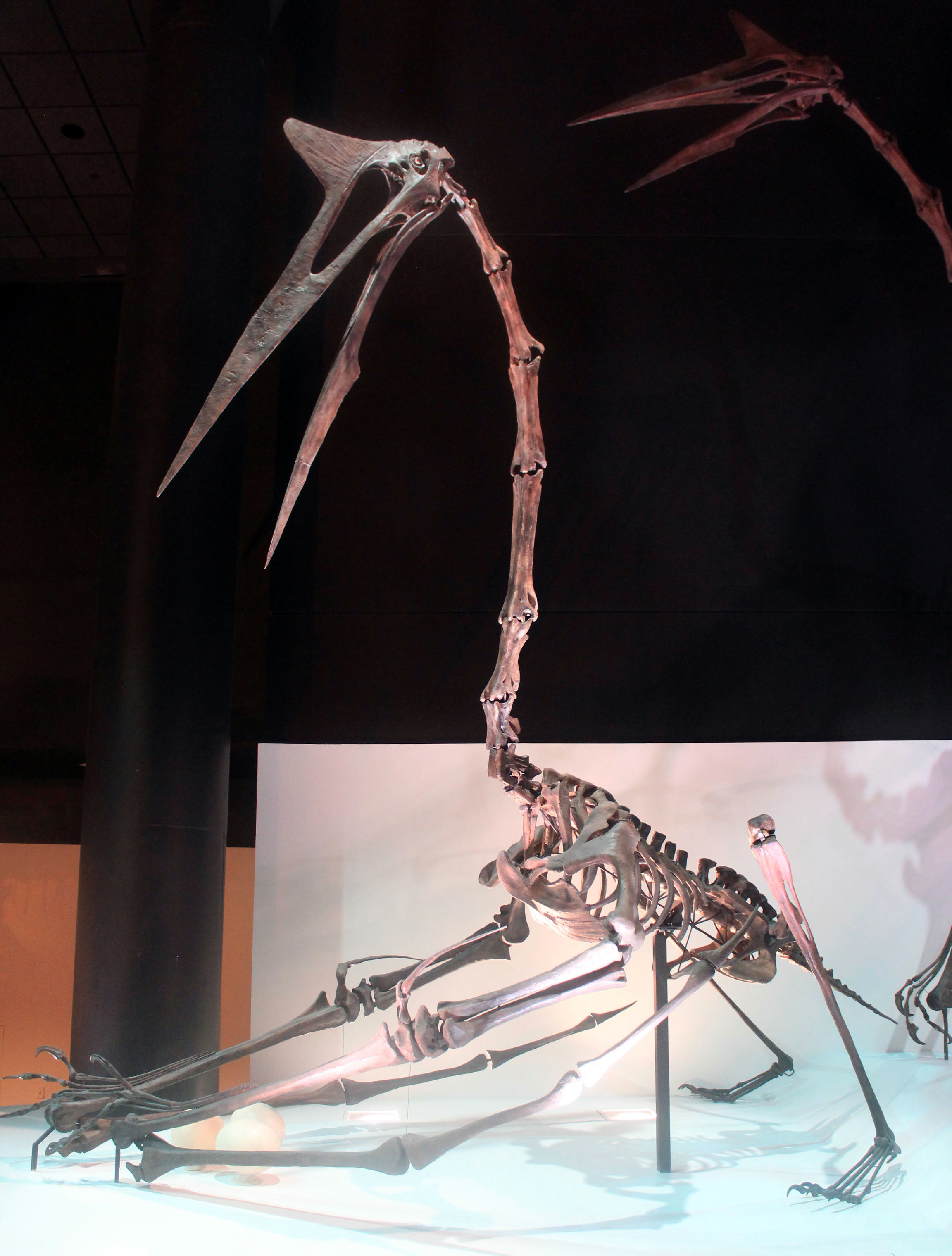With a 11-12-m wingspan (37-40 feet), Quetzalcoatlus is the largest flying organism ever known and one of the most familiar pterosaurs to the public. Its fossils were first discovered in 1971 by University of Texas at Austin graduate student Douglas Lawson in Big Bend National Park, Texas, the United States. Despite a half century of interest, Quetzalcoatlus remains very incompletely described. Some paleontologists think the ancient giant rocked forward on its wingtips like a vampire bat; or that it built up speed by running and flapping like an albatross; or that it didn’t fly at all. But, according to new research, Quetzalcoatlus probably leaped, jumping at least 2.4 m (8 feet) into the air before lifting off by sweeping its wings.
An artist’s rendition of Quetzalcoatlus northropi. Image credit: James Kuether.
“This is the first time that we have had any kind of comprehensive study,” said Dr. Matthew Brown, director of the Vertebrate Paleontology Collections at the Jackson School of Geosciences at the University of Texas at Austin.
“Even though Quetzalcoatlus has been known for 50 years, it has been poorly known.”
The research involved close study of all confirmed and suspected Quetzalcoatlus bones, along with other pterosaur fossils recovered from Big Bend National Park.
This led to the identification of two new pterosaur species: (i) Quetzalcoatlus lawsoni, a smaller species of Quetzalcoatlus with a 5.5 to 6 m (18-20 feet) wingspan; and (ii) Wellnhopterus brevirostri.
Whereas the larger species, Quetzalcoatlus northropi, is known from only about a dozen bones, there are hundreds of fossils from the smaller species.
This provided enough material for the researchers to reconstruct a nearly complete skeleton of the smaller species and study how it flew and moved. They then applied their insights to its larger cousin.
“Pterosaurs have huge breastbones, which is where the flight muscles attach, so there is no doubt that they were terrific flyers,” said Professor Kevin Padian, a paleontologist at the University of California, Berkeley.
Quetzalcoatlus northropi and Quetzalcoatlus lawsoni both called Big Bend home about 70 million years ago, when the region was an evergreen forest instead of the desert of today.
“But each led a distinct lifestyle,” said Professor Thomas Lehman, a paleontologist at Texas Tech University.
By examining the geological context in which the fossils were found, the scientists determined that Quetzalcoatlus northropi might have lived like today’s herons, hunting alone in rivers and streams.
Quetzalcoatlus lawsoni, in contrast, appeared to flock together in lakes — either year-round or seasonally to mate — with at least 30 individuals found at a single fossil site.
Over the years, paleontologists and artists have pictured Quetzalcoatlus as a skimmer, forager and scavenger.
In the new study, the authors present Quetzalcoatlus as a prober that used its long, toothless jaws to sift for crabs, worms and clams from river bottoms and lakebeds.
“Some people said it was a carrion feeder, some people said it flew over the water and plucked fish like a pelican. Those things don’t work,” Professor Padian said.
“The jaws are very long and thin, tapering to a point. Wann used to call them chopsticks. And if you look at a heron or egret’s jaws, they’re the same — good for plucking lizards and other small game, but definitely not carcass-scavenging. It had no teeth.”
“This animal could raise its head and neck vertically, so as to swallow the small prey it seized with its jaws. It could lower the great head far below the horizontal, so if it were cruising above dry land, it might have been able to swoop down and pluck an unsuspecting animal.”
“Walking about on land, it could move its head and neck to an arc of 180 degrees, capable of full vision all around it.”
“The animal had to flap its wings to stall and slow its descent. And then it lands with its back feet and takes a little hop,” he added.
“And then it puts down its front feet, then it assumes a four-legged posture, straightens itself out and walks away.”
Source: sci.news





:focal(1113x203:1114x204)/https://tf-cmsv2-smithsonianmag-media.s3.amazonaws.com/filer/c3/98/c3984113-2262-4dbc-94c1-793b3c8ef019/15-pterosaurwide.jpg)
/https://tf-cmsv2-smithsonianmag-media.s3.amazonaws.com/filer/2c/91/2c91a642-01bb-40b1-8819-2e276d885c24/life_restoration_of_a_group_of_giant_azhdarchids_quetzalcoatlus_northropi_foraging_on_a_cretaceous_fern_prairie.png)





